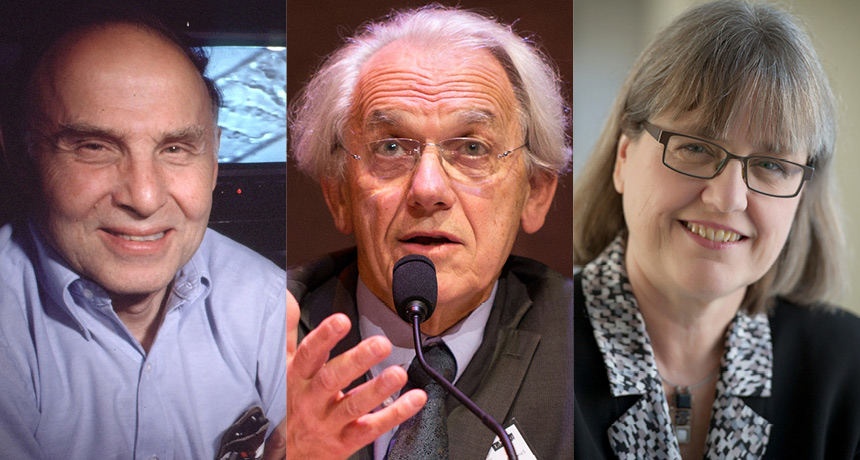
TRICKS OF LIGHT Flourishes of laser virtuosity garnered the Nobel Prize in physics for three scientists: Arthur Ashkin (left), Gérard Mourou (middle) and Donna Strickland (right).
From left: Nokia Bell Labs; Jérémy Barande/École Polytechnique/Wikimedia Commons (CC BY-SA 2.0); University of Waterloo
- More than 2 years ago
Fantastic feats performed with lasers have earned three scientists the 2018 Nobel Prize in physics.
Half of the award, which totals 9 million Swedish kronor (about $1 million), went to physicist Arthur Ashkin for his development of optical tweezers. The technique uses laser light to manipulate tiny particles such as viruses and bacteria.
The other half of the prize went to two scientists who created intense, short bursts of laser light. Physicists Gérard Mourou and Donna Strickland found a way to produce these powerful laser pulses using a method called chirped pulse amplification, which has been harnessed for purposes such as laser eye surgery.
The award marks only the third time a woman has been awarded the physics Nobel. Previous female winners were Marie Curie in 1903 and Maria Goeppert Mayer in 1963.
In his work at Bell Laboratories in Holmdel, N.J., Ashkin took advantage of the fact that individual subatomic particles of light exert pressure. By focusing a laser beam just so, Ashkin realized that small objects could be trapped and moved around by the forces of the particles of light, or photons.
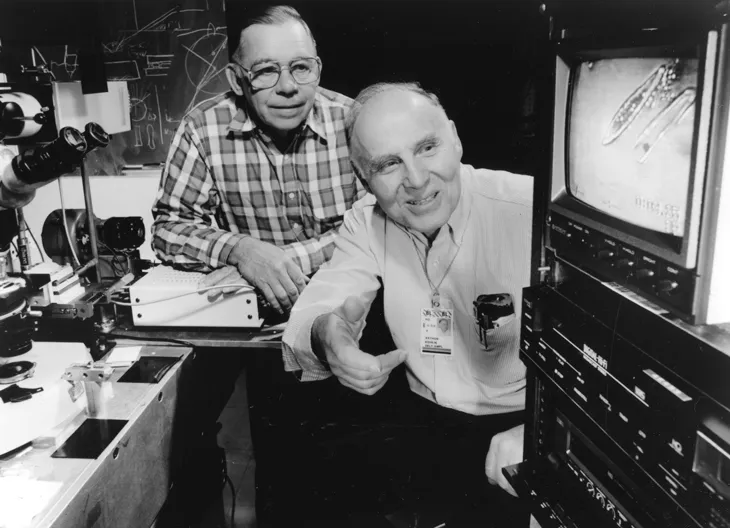
Ashkin’s Nobel was “a thoroughly well-deserved and long-overdue award,” says physicist Philip Jones of University College London.
Since 1986, when Ashkin’s initial study on optical tweezers was published, the technique’s popularity has exploded. Hundreds of labs across the world now use optical tweezers, says Jones, whose research relies on Ashkin’s work. Optical tweezers have been used for myriad purposes: testing how DNA stretches, studying the forces exerted by individual cells, and initiating chemical reactions between a single pair of atoms, to name a few (SN: 5/12/18, p. 24). By building on the optical tweezer technique, scientists were able to trap and cool atoms, a discovery that led to the 1997 Nobel in physics.
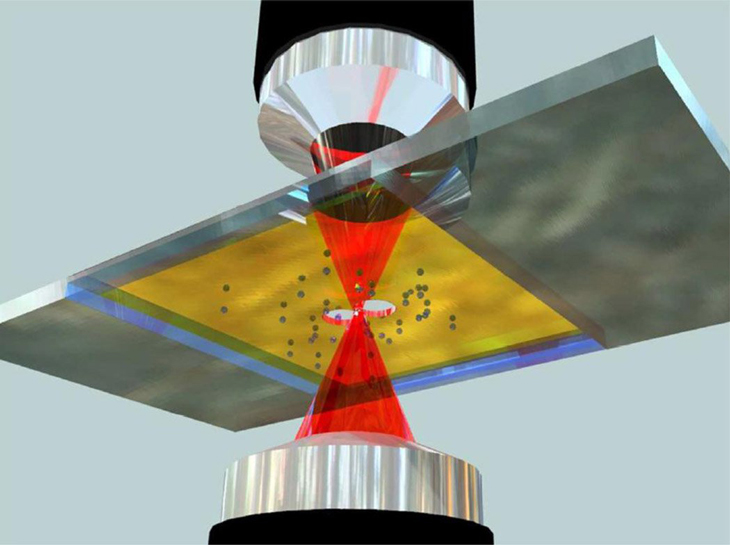
Their work, published in 1985, allowed scientists to intensify laser pulses beyond previous limits. Instruments called amplifiers can strengthen light pulses, but only to a point. Typically, beyond a certain intensity, an amplifier would be damaged by the light. To circumvent this issue, Mourou and Strickland first stretched out their laser pulses, lowering the light’s intensity so that it could be amplified. When compressed back to their original size after amplification, the pulses reached unprecedented intensities.
Today, the technique is used to create the most powerful laser pulses on the planet, packing millions of billions of watts of power. Such strong bursts of light are so rare in the universe that “when one of the modern lasers like this fires, God has to stop and think about what to do,” says physicist Paul Corkum of the University of Ottawa. Intense laser beams could be useful for accelerating particles (SN: 9/29/18, p. 12), achieving nuclear fusion or creating matter from light (SN: 6/14/14, p. 14).
Power up
To make laser pulses more powerful, scientists start with a short burst of light (1) and stretch it out, decreasing its intensity (2). Then they amplify the pulse of light (3) and compress it. After compression, the pulse’s intensity increases greatly (4). Known as chirped pulse amplification, the technique is the basis of many modern lasers.
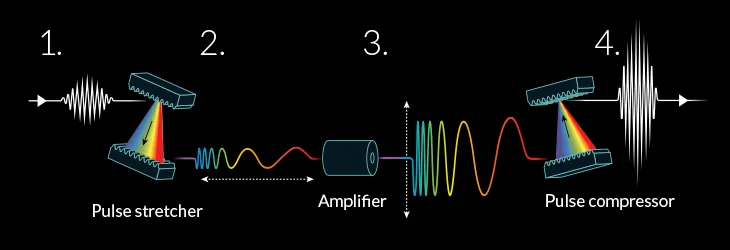
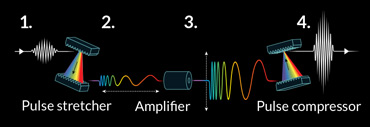
What’s more, scientists have also built off of Mourou and Strickland’s technique to create laser pulses that are only attoseconds long, billionths of a billionth of a second (SN: 3/27/10, p. 16). The technique beats out previous lasers that had pulses in the range of femtoseconds, which are 1,000 times longer. Such ultrashort pulses have helped reveal the mysterious physics of electrons zipping around an atom (SN Online: 7/26/2017).
Mourou and Strickland’s work “has really impacted the extremes to which humans can reach,” Corkum says. But laser pulses based on the technique are also used in more ordinary pursuits, such as laser eye surgery and cutting various materials, including the glass in some cell phones.
Fifty-five years have passed since the last woman received the Nobel in physics. “It’s really terrific that barrier has finally been breached,” says Margaret Murnane, a physicist at the JILA research center in Boulder, Colo. “It’s great that Donna is being recognized for her contribution to this very important laser science advance.”
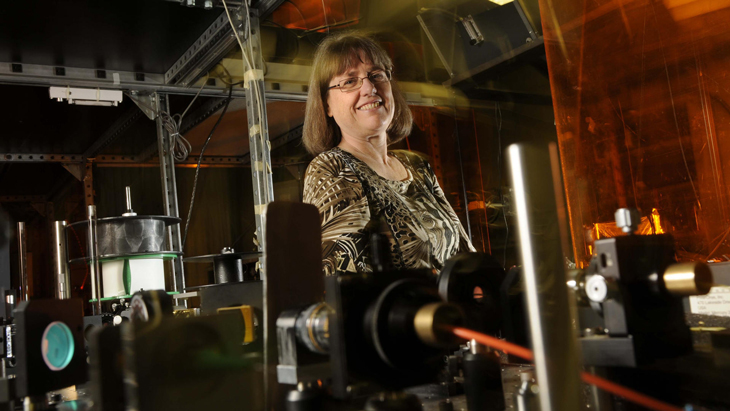
When Strickland was told by a reporter at a news conference on October 2 in Stockholm that she was only the third woman to have won the physics Nobel, she replied, “Is that all? Really?” Strickland said she is honored to be one of those women, and although the number is small, “hopefully in time it’ll start to move forward at a faster rate.”
During the news conference, Göran Hansson, Secretary General of the Royal Swedish Academy of Sciences, which awards the prize, said that the number of women nominated is a “small percentage,” and that “we are taking measures to encourage more nominations [of women] because we don’t want to miss anyone.”







